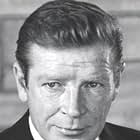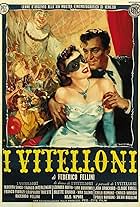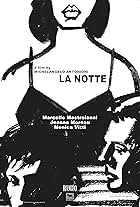A care-free girl is sold to a traveling entertainer, consequently enduring physical and emotional pain along the way.A care-free girl is sold to a traveling entertainer, consequently enduring physical and emotional pain along the way.A care-free girl is sold to a traveling entertainer, consequently enduring physical and emotional pain along the way.
- Won 1 Oscar
- 12 wins & 5 nominations total
- Il proprietario dell'osteria
- (uncredited)
- La prostututa all'osteria
- (uncredited)
- Un prostituta
- (uncredited)
- Il cameriere
- (uncredited)
- La madre di Gelsomina
- (uncredited)
- Il giocoliere
- (uncredited)
- Un uomo che trattiene Zampano
- (uncredited)
- Un uomo che trattiene Zampano
- (uncredited)
Storyline
Did you know
- TriviaWalt Disney expressed serious interest in creating an animated feature based on Gelsomina, and there was interest from doll manufacturers and sweets firms to use her name. "I could have lived on Gelsomina for twenty years," Fellini said.
- GoofsWhen Zampanò meets The Fool while he is repairing a flat tire on his car, the left front wheel is removed and the car is jacked. Right after the altercation, when Zampanò pushes The Fool's car, the wheel rim is back and not jacked anymore.
- Quotes
The Fool: If you won't stay with him, who will? I'm an ignorant man, but I've read a book or two. You may not believe it, but everything in this world has a purpose. Even this pebble, for example.
Gelsomina: Which one?
The Fool: This one. Any one. But even this one has a purpose.
Gelsomina: What's its purpose?
The Fool: Its purpose is - how should I know? If I knew, I'd be...
Gelsomina: Who?
The Fool: The Almighty, who knows everything. When you're born. When you die. Who knows? No, I don't know what this pebble's purpose is, but it must have one, because if this pebble has no purpose, then everything is pointless. Even the stars! At least, I think so. And you too. You have a purpose too.
- Alternate versionsThe German theatrical version was cut by about 6 minutes to speed up the films pacing. DVD release also contains the Italian uncut version as a bonus feature.
- ConnectionsEdited into Histoire(s) du cinéma: La monnaie de l'absolu (1999)
Anthony Quinn was perfect for the role of Zampano, the grubby strongman performer touring the villages & countryside of post-WW2 Italy. No other actor of the day could have possibly brought what Quinn brings to the role. There may have been some European actor who would not have shamed himself in the part, but I can't think of who it might have been & certainly no actor known by Hollywood could have done so well as Quinn. One has to resort to other eras & reach far into the imagination to attempt such speculation. If Wallace or Noah Beery, sr. could have managed a not too corrupted Italian persona; perhaps. If Gilbert Roland had lifted weights & taken supplements for a year; maybe. Victor McLaglen could never have passed for Italian don't laugh he had the rugged looks & the physique. Ricardo Montalban? Too handsome. Ditto, Victor Mature. Mitchum was way too 'American.' Nehemiah Persoff, Eli Wallach, Telly Savalas, Rod Steiger, Karl Malden, even Van Heflin, all considered, all rejected. Brando might have been credible. One remembers "A Streetcar Named Desire" & "On the Waterfront" & thinks: Possibly. But Quinn plays the role as if it was what he was put on earth to do.
Quinn's Zampano is earthily callous yet the viewer senses vulnerability buried deep within the character. Among other facets his perfect performance presents to the viewer is a faintly perceived inkling of past disappointments, of indirectly inferred reasons that Zampano is cruel & insensitive. Quinn's consummate technique paints the broad picture of a lout yet the viewer is able to pull a slender thread of sympathy from his character & that sympathy is necessary for the end of the movie. To be very bad & to still be likable, if only barely, is produced by Quinn as if it were a gift to the viewer. It is acting on the highest possible plane.
Giulietta Masina plays Gelsomina, a tattered urchin Zampano purchases from her poverty-bested mother. Here too, the viewer witnesses genius of casting. Masina's face is one of Fellini's main canvases in the film. It mugs, it displays pride, love & resignation in fleeting cascades of expression, sometimes all within a second. Even without the plasticity of her face her body alone would be enough to write volumes for the viewer. It gambols, prances, pratfalls & cunningly sneaks, sometimes at breakneck speed though the viewer's eye is never allowed to blur these perceptions despite the rapidity of much of the execution.
Richard Basehart plays the Fool, foil to Quinn's brute. Whereas Quinn's act subsists on feats of strength, Basehart's character is all about finesse: juggling, acrobatics & tightrope-walking. Zampano is awkward on those occasions that he attempts real affection toward Gelsomina. The Fool is light strokes of joviality; joking & flirting is his natural mode. Zampano's voice is gruff and in the baritone range; Basehart's lines are delivered high-pitched, with a lilting modulation. However, just as Zampano has an almost hidden vein of sensitivity, Basehart imbues his lighthearted portrayal with a close to imperceptible strand of hardness.
The vehicle of the plot is a journey, but a journey with no particular physical destination. In a work such as "Huckleberry Finn" Twain provides a direction(down-river with the current). Here the characters appear to wander aimlessly from place to place, seemingly interacting by chance with whoever they meet & somehow this very lack of goal helps to give the piece a lifelike aura of randomness. The viewer becomes unaware of watching a film. Like all truly great works of art, technique never intrudes & the viewer could be a fly on the wall.
This lack of artificiality allows the viewer to be fully immersed in the unfolding events. The landscape is the blasted Italian environment just after WW2 & is symbolic of the work's bleak message. The camera rolls on weeds, shacks, broken concrete, poorly maintained roadways, dry, desolate hinterlands & famine-ridden villages. There is no looking away allowed, the viewer is made to see, forced to behold stark realities.
It is impossible to say exactly what makes this film a masterpiece. By a mysterious & perhaps lucky combination of ingredients it propels itself into the highest circle of cinema. The end is emotionally wrenching & I would venture that few are able to leave it as I did long ago in Annapolis without a sense of having been deeply moved.
- How long is La Strada?Powered by Alexa
Details
- Release date
- Country of origin
- Language
- Also known as
- The Road
- Filming locations
- Via Corinto, Rome, Lazio, Italy(Gelsomina waiting for Zampano to come out of police station)
- Production company
- See more company credits at IMDbPro
Box office
- Gross worldwide
- $41,362
- Runtime1 hour 48 minutes
- Color
- Aspect ratio
- 1.37 : 1
Contribute to this page
































